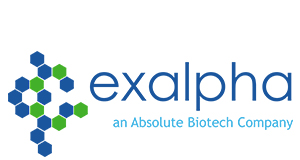Sulf2
Sulf2
Artikelnummer
EXAX1853B
Verpackungseinheit
50 µg
Hersteller
Exalpha Biologicals Inc
Verfügbarkeit:
wird geladen...
Preis wird geladen...
Background: Sulf-2 exhibits arylsulfatase activity and highly specific endoglucosamine-6-sulfatase activity. It can remove sulfate from the C-6 position of glucosamine within specific subregions of intact heparin.Heparan sulfate proteoglycans act as co-receptors for numerous heparin-binding growth factors and cytokines and are key regulators ofcell signaling. Growth factor binding to heparan sulfate results in mitogenic activity only when specific structural features are present within the heparan sulfate chains. These features include sulfation at specific positions within a disaccharide (N, 2-O, 3-O, 6-O) by the enzymes that regulate heparan sulfate synthesis inside the Golgi. Following synthesis and expression, heparan sulfate can be structurally and functionally modified within the extracellular compartment. Enzymes known to have these effects are heparanase, which cleaves heparan sulfate chains into smaller biologically active fragments, and the heparan sulfate 6-O-endosulfatases (Sulfs). The Sulfs represent a new and novel family of enzymes that are secreted via the Golgi and subsequently localized to the cell surface or may be released into the extracellular matrix. Sulf-1 enzyme is required for Wnt-mediated signaling in developing quail muscle. Sulf1 was shown (in quial) to restore bone morphogenetic proteinsignaling in cells by releasing the functional inhibitor, Noggin, from cellsurfaces. Quail Sulf1 can also inhibit growth factor signaling,the removal of the 6-O-sulfation is required for the formation of theFGF HS FR1c ternary complex blocking FGF2 signaling. Analysis of human tumor tissue and tumor cell lines suggests thatHSulf-1 is misregulated in cancers. HSulf-1 is found in a variety ofnormal tissues but is down-regulated in tumor cell lines originatingfrom ovarian, breast, pancreatic, renal, and hepatocellular carcinoma. Tumors formed by cells expressing Sulf demonstrate enhanced extracellular matrix deposition. The 6-O-sulfation of heparan sulfate of myeloma tumor cells may be a critical factor in determiningand regulating the in vivo growth of this cancer.
Concentration: See vial for concentration
Formulation: Provided as solution in phosphate buffered saline with 0.08% sodium azide
UniProt: Q8IWU5
Caution: This product is intended FOR RESEARCH USE ONLY, and FOR TESTS IN VITRO, not for use in diagnostic or therapeutic procedures involving humans or animals.
Concentration: See vial for concentration
Formulation: Provided as solution in phosphate buffered saline with 0.08% sodium azide
UniProt: Q8IWU5
Caution: This product is intended FOR RESEARCH USE ONLY, and FOR TESTS IN VITRO, not for use in diagnostic or therapeutic procedures involving humans or animals.

 English
English




